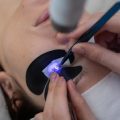Introduction to Laser Tattoo Removal
Tattoos have long been a part of British culture, serving as personal expressions, commemorations, or even youthful experiments. However, as life changes, so too can our feelings towards the ink we once chose. In the UK, increasing numbers of people are seeking tattoo removal for various reasons—be it professional requirements, a desire to move on from past relationships, or simply outgrowing an old design. As the demand for safe and effective removal grows, laser technology has become the gold standard in this field. The journey from rudimentary methods like dermabrasion and salabrasion to today’s sophisticated lasers is a testament to scientific progress. The introduction of medical-grade lasers in the late 20th century revolutionised tattoo removal by offering precise targeting of ink with minimal damage to surrounding skin. Understanding how these lasers work not only provides reassurance but also helps set realistic expectations for those considering treatment.
2. How Lasers Target Tattoo Ink
To truly appreciate how laser tattoo removal works, its important to understand the science behind the process. At its core, laser removal relies on the interaction between specific wavelengths of light and the pigments within your tattoo. Each type of tattoo ink absorbs light differently depending on its colour, which is why different lasers or settings are used for various ink shades.
The Role of Wavelengths
Lasers emit highly controlled pulses of light at particular wavelengths. When this light is directed at your skin, only the tattoo pigment absorbs it; the surrounding skin tissue remains largely unaffected. The energy from the laser breaks down the ink particles into much smaller fragments that your body’s immune system can gradually clear away.
| Ink Colour | Absorbed Wavelength (nm) | Common Laser Type |
|---|---|---|
| Black | 1064 | Nd:YAG |
| Red | 532 | Nd:YAG (frequency-doubled) |
| Green/Blue | 694 / 755 | Ruby / Alexandrite |
How Skin Physiology Affects Removal
Your skin acts as both a barrier and a participant in this process. The depth and density of your tattoo, as well as your individual skin type, influence how effectively the laser can reach and fragment the ink. For instance, darker skin contains more melanin, which can also absorb some laser energy, requiring careful adjustment of settings by trained practitioners to avoid unwanted side effects.
A Collaborative Process Between Technology and Biology
The ultimate success of laser tattoo removal hinges on both advanced technology and your body’s natural processes. While lasers break up the ink, it’s your lymphatic system that does the heavy lifting in flushing those tiny fragments out over time. This combination makes modern laser removal a precise yet gradual solution for unwanted tattoos, tailored to each person’s unique physiology and ink composition.

3. Stages of Tattoo Fading: What Happens Under the Skin
The journey of tattoo removal is far more than skin deep, and understanding the stages of tattoo fading can help demystify the process. When a laser is applied to a tattooed area, it emits highly concentrated pulses of light that are carefully calibrated for the specific colours and depth of the ink. These pulses penetrate the upper layers of skin without causing significant damage to the surrounding tissue, targeting only the ink particles embedded within the dermis.
Once the laser energy strikes these ink particles, a fascinating process occurs at a microscopic level. The intense heat from the laser shatters the larger ink molecules into much smaller fragments. This fragmentation is essential because your body’s immune system struggles to clear away whole ink particles due to their size, which is why tattoos remain permanent otherwise.
After each session, your immune system recognises these broken-down fragments as foreign bodies. Specialised cells called macrophages move in to engulf and transport these tiny ink particles through your lymphatic system, gradually clearing them from your skin over weeks and months. It’s important to note that this natural cleansing process takes time, so visible fading often becomes more pronounced several weeks after each treatment rather than immediately.
The stages of tattoo fading are influenced by several factors including ink colour, depth, density, and even your overall health. Black and dark-coloured inks typically respond best due to their higher absorption of laser energy, while lighter colours may require more sessions. Additionally, patience is key—your skin needs time to heal and allow your immune response to do its job between treatments.
4. Types of Lasers Used in the UK
When it comes to laser tattoo removal in the UK, not all lasers are created equal. Clinics across Britain rely on a handful of core laser technologies, each suited to different ink colours, skin types, and depths of tattoo. Understanding the differences between these technologies can help you make an informed decision about your treatment options.
Q-Switched Lasers
The Q-switched laser has long been considered the gold standard for tattoo removal. Its pulse duration is measured in nanoseconds, which means it delivers energy very quickly to shatter the ink particles while minimising damage to surrounding skin. There are a few variants commonly used:
| Type | Best for Ink Colours | Typical Use Cases |
|---|---|---|
| Q-Switched Nd:YAG (1064nm & 532nm) | Black, dark blue (1064nm); red, orange, yellow (532nm) | Most professional tattoos; suitable for darker skin tones due to lower risk of pigmentation changes |
| Q-Switched Ruby (694nm) | Green, blue, black | Older or stubborn inks; less common in UK clinics due to potential side effects on lighter skin |
| Q-Switched Alexandrite (755nm) | Green, blue | Tattoos with vibrant green/blue hues; usually reserved for specific cases |
Pico Lasers
Pico technology represents the latest evolution in laser tattoo removal. Instead of nanoseconds, Pico lasers fire pulses in picoseconds—one thousand times faster than Q-switched lasers. This ultra-short pulse duration means ink particles are shattered into even finer fragments, which may be cleared by the body more efficiently and potentially with fewer sessions.
| Laser Type | Main Advantages | Common Suitability |
|---|---|---|
| PicoSure (755nm) | Highly effective on green and blue inks; shorter recovery time; reduced risk of scarring | Difficult-to-remove colours; patients seeking quicker results |
| PicoWay (532nm, 785nm, 1064nm) | Versatile wavelengths for multicoloured tattoos; safe for a variety of skin types including darker tones | Complex or multi-coloured tattoos; sensitive skin types often found across the UKs diverse population |
Choosing the Right Laser: What Matters?
The most appropriate laser depends on several factors: ink colour, depth, age of the tattoo, and your skin tone. For example, Q-switched Nd:YAG remains a staple for black and dark inks—still the most common tattoo colours seen in UK clinics. In contrast, Pico lasers have become increasingly popular for removing more challenging colours and reducing overall treatment time.
A Local Perspective: Safety Standards in British Clinics
The UK has rigorous safety standards governing laser use in aesthetic medicine. Reputable clinics will assess your individual needs and select equipment accordingly—whether that’s a tried-and-tested Q-switched platform or the latest Pico system. Always look for practitioners registered with recognised regulatory bodies such as the Care Quality Commission (CQC) or Save Face.
5. Factors Affecting Treatment Outcomes
Laser tattoo removal is a nuanced process, and its effectiveness can vary significantly depending on several key factors. For those considering this treatment in the UK, understanding these variables can help set realistic expectations and inform your decision-making process.
Tattoo Colour Complexity
The colour of the tattoo ink is one of the most critical determinants of removal success. Black and darker inks tend to absorb laser light more efficiently, making them easier to break down and remove. In contrast, brighter colours such as green, blue, and especially yellow or pastel tones can be more stubborn. These pigments may require additional sessions or specialised laser wavelengths tailored for their absorption spectra.
Age of the Tattoo
The age of your tattoo also plays an important role. Older tattoos generally respond better to laser treatment because the body’s immune system has already begun breaking down the ink particles over time. Newer tattoos contain fresher, denser pigment that often demands more sessions to achieve significant fading.
Location on the Body
Where the tattoo sits on your body impacts how well it responds to laser removal. Tattoos located closer to the heart, such as those on the chest or upper arms, typically fade faster due to better blood circulation aiding pigment clearance. Conversely, tattoos on extremities like ankles or hands may take longer to remove since circulation is less robust in these areas—a point particularly relevant for many UK clients who have popular tattoo placements around wrists and feet.
Individual Skin Types and UK Demographics
Your unique skin type—classified by the Fitzpatrick scale—also affects treatment outcomes. Lighter skin types (Fitzpatrick I-III), more common among white British populations, usually experience fewer complications and more predictable results. However, individuals with darker skin tones (Fitzpatrick IV-VI), including those from Black, Asian, or mixed ethnic backgrounds prevalent across the UK, require careful consideration; certain lasers carry a higher risk of pigmentation changes in these cases.
Additional Considerations
Other factors include your overall health, immune system efficacy, lifestyle habits such as smoking, and even how well you follow aftercare instructions—all of which can influence healing and pigment clearance. Consulting with a reputable clinic experienced in working with diverse UK demographics ensures a safer process tailored to your individual needs.
6. Risks, Considerations, and Aftercare
Laser tattoo removal is generally considered safe when performed by qualified practitioners, yet it’s vital to be aware of the risks and best practices for aftercare—especially within the UK’s regulatory framework. The NHS and British Skin Foundation both highlight the importance of choosing reputable clinics registered with the Care Quality Commission (CQC) or Health Inspectorate Wales.
Potential Side Effects
Common side effects include redness, swelling, blistering, and temporary changes in skin pigmentation. Some people may experience mild bruising or a sunburn-like sensation for a few days post-treatment. In rare cases, scarring or persistent hypo- or hyperpigmentation may occur. Allergic reactions to tattoo ink fragments released during the procedure are uncommon but possible.
Safety Measures in the UK
Ensuring your clinic uses CE-marked laser equipment and employs certified practitioners is key to minimising complications. Clinics should provide a thorough consultation and patch test prior to full treatment, adhering to local guidelines on infection control and patient consent.
Aftercare Best Practices
Post-treatment care is crucial for optimal healing. Keep the treated area clean and dry, using only mild soap and tepid water. Avoid sun exposure by covering the area or applying high-SPF sunscreen—UV rays can exacerbate pigmentation changes. Refrain from picking at scabs or blisters to reduce scarring risk. Many UK clinics recommend applying a sterile dressing and non-perfumed moisturiser. Over-the-counter pain relief like paracetamol may help manage discomfort; however, avoid anti-inflammatories like ibuprofen immediately after treatment as they could increase bleeding risk.
When to Seek Medical Advice
If you notice signs of infection (such as pus, increasing redness, or fever) or develop severe side effects, contact your GP promptly. Most reputable clinics will also offer follow-up appointments to monitor your recovery and advise on further sessions if necessary.
By understanding these considerations and following recommended aftercare protocols tailored to UK standards, you can significantly improve safety outcomes and achieve more satisfactory results from your laser tattoo removal journey.
7. Conclusion: Setting Realistic Expectations
In summary, understanding the science behind laser tattoo removal is essential for anyone in the UK contemplating this procedure. While advances in laser technology have made it possible to significantly fade or remove tattoos, it is crucial to approach the process with realistic expectations. Complete removal is not always guaranteed; factors such as ink colour, depth, skin type, and age of the tattoo all play a significant role in the results you can achieve. Sessions are spaced weeks apart to allow for proper healing and optimal clearance, and some discomfort is to be expected during treatment. Additionally, costs can add up over multiple sessions, so planning ahead financially is wise. For those considering laser tattoo removal, consulting with a qualified practitioner who understands both the technical side and the nuances of British skin tones and aftercare standards is highly recommended. By setting practical goals and being informed about each stage of the process, you are more likely to have a positive experience and satisfactory outcome.

